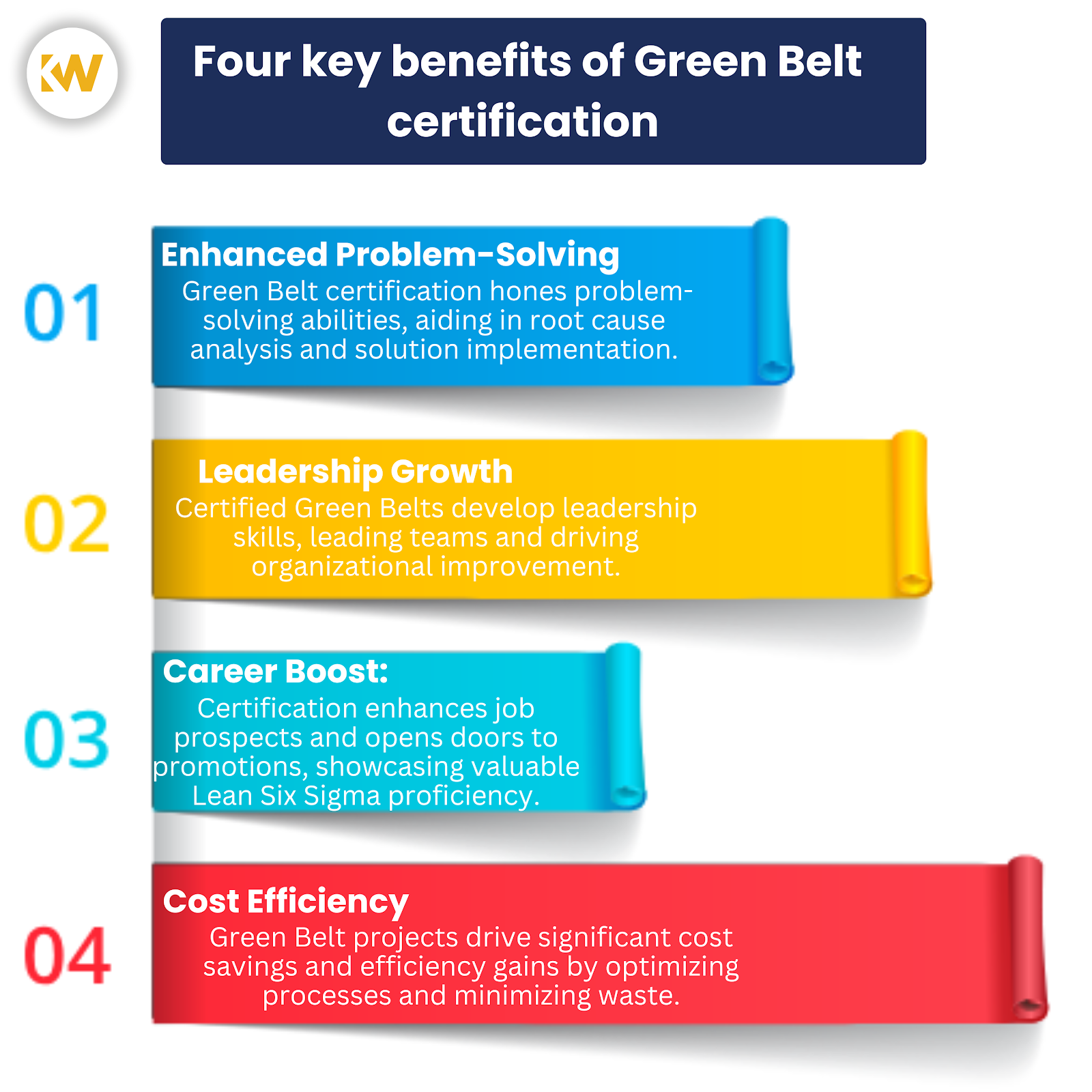Understanding Effectiveness: A Handbook for Lean Six Sigma Green Belt Accreditation
Organizations are continuously looking for ways to improve productivity, reduce waste, and streamline operations because they know that efficiency is essential for success in today's world. Lean Six Sigma is a potent combination of Six Sigma techniques and Lean principles that has become a game-changing strategy for attaining operational excellence. The Green Belt accreditation, a highly sought-after title that denotes competence in promoting process changes, is the foundation of this system. Let's examine what it means to get certified as a Lean Six Sigma Green Belt and why it's an advantageous skill in the current competitive environment.
Knowing Lean Six Sigma
Let's first discuss the basics of Lean Six Sigma before delving into the importance of the Green Belt certification. The Toyota Production System is the source of lean concepts, which emphasize reducing waste, maximizing flow, and increasing value for customers. The goal of Six Sigma, which was developed by Motorola and made popular by General Electric, is to attain near-perfect quality by minimizing errors and variance in processes. Lean Six Sigma provides an all-encompassing strategy to continuous improvement by combining speed and precision through the integration of various approaches.
The Green Belt's Function
As front-line issue solvers and project managers, Green Belts are essential members of the Lean Six Sigma hierarchy. These people can spearhead improvement projects in their respective fields because they have a strong grasp of Lean Six Sigma principles and technologies. Green Belts oversee initiatives targeted at raising productivity, quality, and customer happiness. These initiatives may involve reducing production procedures, boosting service delivery, or strengthening administrative workflows.
Green Belt Certification: Obtaining this certification demonstrates that one has mastered the principles of Lean Six Sigma and is adept at implementing them in practical settings. Essential topics including process mapping, data analysis, root cause analysis, statistical tools, and the DMAIC (Define, Measure, Analyze, Improve, Control) methodology are typically covered in Green Belt training programs. After a demanding training program, candidates take a certification exam to evaluate their knowledge and problem-solving abilities.
Advantages of Becoming a Certified Green Belt:
1. Improved Ability to Solve Problems:
With the help of green belt training, people may solve problems more methodically by determining the underlying causes of issues, evaluating the facts, and putting workable solutions into place. These abilities are extremely valuable in all fields, enabling businesses to take on challenging tasks and promote long-term progress.
2. Leadership Development
Earning a Green Belt credential develops leadership qualities in addition to technical proficiency. In order to support change projects, Green Belts get experience leading cross-functional teams, communicating clearly, and influencing stakeholders. Fostering a culture of continuous improvement and accelerating organizational transformation require these qualities in a leader.
3. employment Advancement
A Green Belt certification will greatly improve employment possibilities in the competitive work market of today. Professionals with Lean Six Sigma experience are highly valued by employers, who see them as catalysts for achieving measurable outcomes and advancing operational excellence. Certified Green Belts are in a good position to grow in their careers, whether they're looking to move up the corporate ladder or take advantage of new chances.
4. Cost Savings and Efficiency benefits
Green Belt initiatives frequently result in significant cost savings and efficiency benefits because they optimize processes and minimize waste. Lean Six Sigma programs have an influence that goes beyond individual projects and improves customer happiness, cycle times, and product quality while also generating financial gains for businesses.
In summary,
companies need to continuously pursue excellence in a fast-paced business climate that is marked by intense competition and changing client needs. Professionals with a Lean Six Sigma Green Belt certification are prepared to create operational improvements and provide measurable business outcomes because they have the necessary knowledge, abilities, and credentials. Whether you are a rising star in your area or a seasoned industry veteran, investing in Green Belt training can open doors for career advancement, personal development, and organizational success. In today's changing environment, embrace the path to mastery and realize Lean Six Sigma's full potential.
Lean Six Sigma Green Belt certification is a lighthouse of expertise in the quest of excellence and efficiency, pointing people and organizations in the direction of a better, more productive future.

.png)

.png)
Comments
Post a Comment